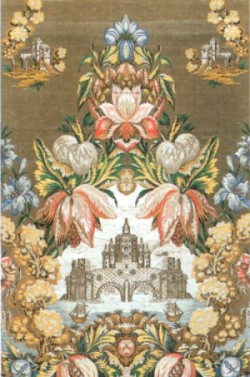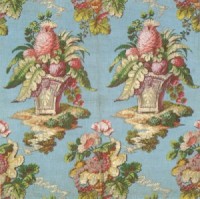In their special exhibition of the year 2002 the Abegg-Stiftung is presenting naturalistic silk weavings from around 1730 to 1745. Views of princely gardens and castles with colourful flower motifs invite to take a closer look.The precious silks have survived in the form of single lengths of fabric as well as entire garments and convey an impression of the luxurious life-style of the Ancien Régime.
With their rich colour scheme and the abundant use of gold and silver threads, these silks are counted among the highlights of decorative art. Their detailed desings reflect the highly specialised weaving techniques, which allowed for a refined representation of complex compositions.
Use and re-use
Most of the silks shown here were originally
intended to be made into ladies' dresses. Skirt panels
can be recognised by the fact that their desings is
concentrated in the lower paret of the fabric. Discarded
garments were frequently given to the church and the
precious silks later re-used in the making of liturgical
vestments.


